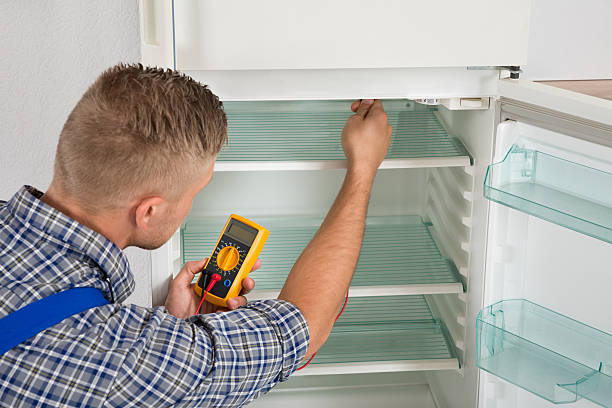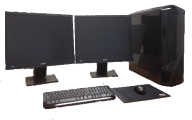Refrigerators are the unsung heroes of our kitchens, keeping our food fresh and our drinks cold. But when your Sub Zero refrigerator stops cooling, it can quickly turn from a trusty ally into a source of stress. Sub Zero refrigerators are renowned for their reliability and premium features, but even the best appliances can encounter problems. In this article, we’ll dive into the common issues that can cause your Sub Zero refrigerator to stop cooling and provide you with practical solutions to get it back on track.
Understanding Sub Zero Refrigerators
Sub Zero has been a leading name in the refrigeration industry for decades. Known for their high-quality construction and advanced technology, Sub Zero refrigerators are a favorite among homeowners who want the best for their kitchens. These refrigerators offer unique features like dual refrigeration systems, air purification, and precise temperature control, making them stand out from the competition.
Common Sub Zero Refrigerator Problems
Despite their excellent reputation, Sub Zero refrigerators can still experience problems. One of the most common issues is when the refrigerator stops cooling properly. This can be due to various factors, and identifying the root cause is crucial for effective troubleshooting and repair.
Refrigerator Not Cooling: The Basics
The cooling mechanism in your refrigerator involves several components working together to maintain a consistent temperature. When one of these components fails, the Refrigerator not cooling effectively. Initial signs of cooling failure include warmer-than-usual temperatures, spoiled food, and unusual noises.
Causes of Cooling Issues in Sub Zero Refrigerators
Thermostat Problems
The thermostat regulates the temperature inside your refrigerator. If it’s faulty, the refrigerator may not cool properly. You might notice inconsistent temperatures or a complete lack of cooling.
Compressor Issues
The compressor is the heart of the cooling system. If it fails, your refrigerator won’t be able to cool. Symptoms of compressor problems include loud noises and a lack of cold air.
Condenser Coil Problems
Condenser coils dissipate heat from the refrigerator. If they are dirty or blocked, they can’t release heat efficiently, causing cooling issues. Regular cleaning is essential to keep them functioning properly.
Evaporator Fan Malfunctions
The evaporator fan circulates cold air throughout the refrigerator. If it stops working, certain areas may not cool properly. Signs of a malfunctioning fan include unusual noises and uneven cooling.
Door Seal Issues
A proper door seal ensures that cold air stays inside the refrigerator. If the seal is damaged or worn, cold air can escape, leading to sub-zero refrigerator problems. Inspect the seal regularly and replace it if necessary.
Refrigerant Leaks
Refrigerant is the substance that cools the air inside your refrigerator. Leaks can reduce the amount of refrigerant, making it harder for the refrigerator to maintain the desired temperature. Detecting and repairing leaks promptly is crucial.
Troubleshooting Cooling Issues
When your Sub Zero refrigerator stops cooling, there are a few steps you can take before calling a professional. Check the thermostat settings, clean the condenser coils, and inspect the door seals. If these steps don’t resolve the issue, it may be time to seek professional help.
Thermostat Problems and Solutions
Identifying thermostat issues involves checking if the refrigerator maintains a consistent temperature. If not, you may need to calibrate or replace the thermostat. This process typically involves accessing the control panel and following the manufacturer’s instructions.
Compressor Issues and Solutions
Compressor problems often require professional attention. If you suspect a compressor failure, it’s best to contact a technician who can diagnose and repair or replace the compressor as needed.
Condenser Coil Problems and Solutions
Cleaning the condenser coils is a straightforward task that can significantly improve cooling efficiency. Unplug the refrigerator, locate the coils (usually at the back or underneath), and use a vacuum or brush to remove dust and debris.
Evaporator Fan Malfunctions and Solutions
To check the evaporator fan, listen for unusual noises and see if cold air is being distributed evenly. If the fan is faulty, you may need to replace it. This involves removing the panel covering the fan and installing a new one.
Door Seal Problems and Solutions
A quick way to check the door seal is to close the door on a piece of paper. If you can pull the paper out easily, the seal may need replacing. You can purchase a new seal and follow the manufacturer’s instructions for installation.
Refrigerant Leaks: Detection and Repair
Detecting a refrigerant leak involves checking for signs like hissing sounds or oily residue around the refrigerator. Repairing a leak typically requires a professional technician who can safely handle refrigerants and ensure the system is properly recharged.
Maintenance Tips for Sub Zero Refrigerators
Regular maintenance can prevent many common issues. Clean the condenser coils every six months, check the door seals regularly, and ensure the thermostat is set to the correct temperature. These simple steps can extend the lifespan of your refrigerator and keep it running efficiently.
When to Call a Professional
If you’ve tried basic troubleshooting and your refrigerator still isn’t cooling, it’s time to call a professional. Look for a technician with experience in Sub Zero appliances. They have the expertise to diagnose and fix complex issues.
Conclusion
A Sub Zero refrigerator is a significant investment, and keeping it in top working condition is essential. By understanding common cooling issues and knowing how to troubleshoot them, you can ensure your refrigerator remains reliable for years to come. Regular maintenance and timely repairs are key to avoiding major problems and ensuring your food stays fresh and cool.



